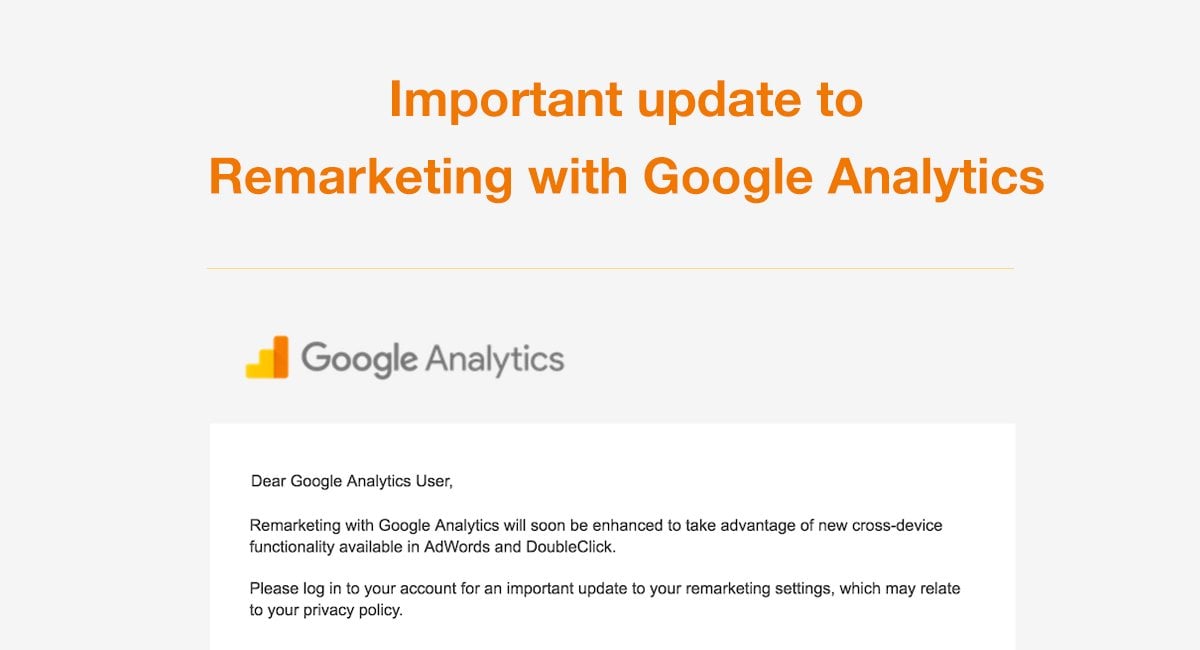Effective Approaches for Remarketing in Google Analytics
In the realm of digital advertising and marketing, the world of remarketing in Google Analytics stands as a crucial device for services aiming to enhance their online existence and conversion rates. Through strategic target market division, customized remarketing listings, and interesting advertisement creatives, services can craft customized campaigns that reverberate with their target audience. Nonetheless, the true success lies in the capability to constantly refine and enhance these techniques based on efficiency metrics and data insights. By exploring the subtleties of vibrant remarketing and leveraging advanced monitoring tools, services can unlock the complete capacity of their remarketing efforts, resulting in increased brand visibility and customer interaction.
Target Market Division
Utilizing target market division is a pivotal technique in maximizing the performance of remarketing projects within Google Analytics. By dividing your audience right into distinct teams based on their behavior, demographics, or interests, you can tailor your marketing messages to be a lot more appealing and appropriate. This strategy permits you to provide individualized ads to particular sections, enhancing the possibility of conversion.

Moreover, audience division helps you comprehend the differing needs and choices of various client groups, enabling you to craft more engaging advertisement creatives and deals. This targeted approach not just boosts the efficiency of your remarketing efforts but also enhances general campaign efficiency.
Establishing Remarketing Lists
To properly execute remarketing techniques in Google Analytics, the preliminary step involves producing targeted remarketing checklists based upon specific target market communications. Establishing up remarketing lists enables marketers to segment their website site visitors right into different groups based upon their habits, such as pages seen, items searched for, or activities taken on the site. By defining these segments, marketers can after that produce tailored and appropriate advertisements that target these details teams, raising the possibility of conversion.
Remarketing listings can be established up using different requirements such as page brows through, period of visit, particular objective completions, or also details events set off on the internet site. This degree of modification enables online marketers to customize their advertisements to match the interests and preferences of each fractional audience, bring about greater involvement and conversion rates.
Additionally, remarketing lists can also be created based on data imported from various other sources like CRM systems, enabling a lot more exact targeting. By setting up these targeted remarketing listings, marketing professionals can efficiently reach out to possible consumers who have actually currently revealed rate of interest in their products or solutions, making the most of the influence of their remarketing projects.
Producing Compelling Ad Creatives
After segmenting web site visitors right into targeted remarketing checklists based on details audience communications, the next essential action is to craft compelling advertisement creatives that reverberate with each fractional team's preferences and interests. The performance of remarketing projects heavily depends on the capability of these ad creatives to catch the interest of the target market and drive them to take the preferred action.
To create compelling ad creatives, it is necessary to comprehend the special features of each fractional team (What Is “Remarketing” In Google Analytics?). Tailoring the messaging, visuals, and supplies to align with the rate of interests and preferences of the audience can substantially increase the opportunities of conversion. Making use of vibrant ads that instantly change web content based upon the individual's habits can also boost the personalization of the advertisement experience

Tracking Efficiency and Optimization
Efficient monitoring of project performance and consistent optimization are essential facets of effective remarketing methods in Google Analytics. To make sure the performance of remarketing campaigns, marketing experts must routinely track crucial performance metrics such as click-through prices, conversion prices, and return on ad spend. By monitoring these metrics, marketing professionals can gain beneficial insights right into the efficiency of their campaigns and determine locations for renovation.
In Google Analytics, marketing experts can utilize tools like conversion monitoring and audience segmentation to examine the performance of their remarketing projects. Conversion tracking enables marketers to track certain activities that customers take after clicking a remarketing ad, providing valuable data on the efficiency of the project in driving desired end results. Audience segmentation, on the other hand, makes it possible for marketers to divide their audience into various sections based upon numerous standards such as demographics, actions, and rate of interests, enabling more targeted and personalized remarketing efforts.
Constant optimization is vital for optimizing the influence of remarketing campaigns. Marketers should use A/B testing to trying out various ad creatives, messaging, and targeting methods to identify one of the most effective techniques. By routinely evaluating project efficiency data and making data-driven optimizations, marketing experts can ensure that their remarketing projects are attaining the desired results and driving conversions efficiently.
Leveraging Dynamic Remarketing
Using dynamic remarketing can dramatically enhance the significance and influence of targeted ads in Google Analytics. This advanced method enables marketers to reveal individualized ads to customers who have actually formerly visited their internet site or used their mobile application. By dynamically displaying product and services that the users have revealed rate of interest in, dynamic remarketing recommended you read aids to keep the brand fresh in their minds and encourages them to go back to complete a purchase.

Additionally, dynamic remarketing projects can be automated and optimized in real-time based on performance information, making sure that the advertisements continue to be appropriate and reliable. By leveraging vibrant remarketing in Google Analytics, marketers can develop more impactful and targeted ad campaign that reverberate with their target market and drive outcomes.
Final Thought
To conclude, efficient remarketing techniques in Google Analytics entail audience division, targeted remarketing lists, engaging ad creatives, performance surveillance, and dynamic remarketing. By focusing on customized ads, data evaluation, and continual optimization, organizations can boost conversion rates and drive interaction successfully. Leveraging tools like conversion monitoring ensures that advertisements continue to be relevant and tailored, resulting in general success in remarketing initiatives.
Through calculated target market segmentation, customized remarketing listings, and engaging ad creatives, companies can craft personalized projects that reverberate with their target audience. Utilizing dynamic advertisements that automatically adjust web content based on the individual's behavior can additionally improve the personalization of the advertisement experience.
Conversion monitoring enables marketing experts to track certain actions that customers take after clicking on a remarketing advertisement, providing useful information on the performance of the campaign in driving preferred end results.Using vibrant remarketing This Site can considerably boost the importance and effect of targeted ads in Google Analytics - What Is “Remarketing” In Google Analytics?.In conclusion, effective remarketing techniques in Google Analytics include audience segmentation, targeted remarketing lists, engaging ad creatives, performance tracking, and vibrant remarketing
Comments on “A Total Overview to Remarketing In Google Analytics”